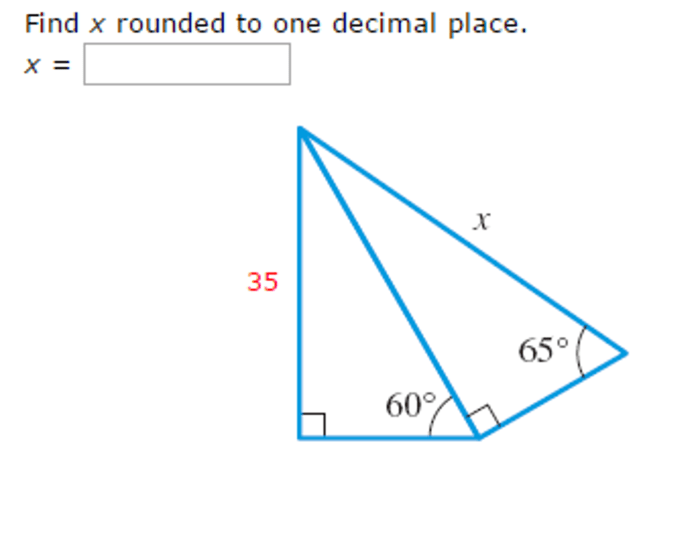Find x rounded to one decimal place. – Rounding numbers to one decimal place, also known as rounding to the nearest tenth, is a fundamental mathematical skill with applications in various fields. This guide provides a comprehensive overview of rounding numbers to one decimal place, covering its concept, methods, applications, and common errors.
Understanding the principles of rounding is crucial for accurate calculations and clear communication of numerical data. Whether in finance, science, engineering, or everyday life, rounding plays a significant role in ensuring precision and clarity.
Rounding Numbers to One Decimal Place

Rounding numbers to one decimal place involves approximating a number to the nearest tenth. This technique is widely used in various fields to simplify calculations and present data in a concise and meaningful way.
Methods for Rounding
There are several methods for rounding numbers to one decimal place:
- Rounding up:If the digit in the hundredths place is 5 or greater, the tenths digit is increased by 1. For example, 3.15 rounds up to 3.2.
- Rounding down:If the digit in the hundredths place is less than 5, the tenths digit remains the same. For example, 3.14 rounds down to 3.1.
- Rounding to the nearest tenth:If the digit in the hundredths place is exactly 5, the tenths digit is rounded to the nearest even number. For example, 3.15 rounds to 3.2 and 3.05 rounds to 3.0.
Applications of Rounding
Rounding to one decimal place finds applications in various fields:
- Finance:Currency amounts are often rounded to the nearest tenth of a cent for practical purposes.
- Science:Experimental data is often rounded to one decimal place to improve readability and reduce measurement errors.
- Engineering:Design specifications and calculations are often rounded to one decimal place for ease of use and clarity.
Decimal Place Notation
Numbers can be written in decimal place notation, where the decimal point separates the whole number part from the fractional part. To round a number to one decimal place, the number after the decimal point is rounded to the nearest tenth.
Rounding in Calculations, Find x rounded to one decimal place.
Rounding can be incorporated into mathematical calculations to simplify and improve efficiency:
- Approximations:Rounding can be used to obtain approximate values when exact values are not required.
- Error reduction:Rounding can help reduce errors in calculations by eliminating unnecessary precision.
- Simplification:Rounding can simplify complex calculations by making numbers easier to work with.
Common Errors in Rounding
Common errors in rounding include:
- Incorrect rounding method:Using the wrong rounding method can lead to inaccurate results.
- Ignoring the hundredths place:Failing to consider the digit in the hundredths place can result in incorrect rounding.
- Rounding too early:Rounding numbers prematurely in a calculation can accumulate errors.
Top FAQs: Find X Rounded To One Decimal Place.
What is the difference between rounding up and rounding down?
Rounding up involves increasing the digit in the tenths place by one if the hundredths place is 5 or greater. Rounding down involves leaving the digit in the tenths place unchanged if the hundredths place is less than 5.
Why is rounding important in calculations?
Rounding helps simplify calculations and improve their efficiency, particularly when dealing with large datasets or when precision beyond one decimal place is not required.
What are some common errors in rounding?
Common errors include rounding to the incorrect decimal place, truncating instead of rounding, and incorrectly applying the rounding rules.



